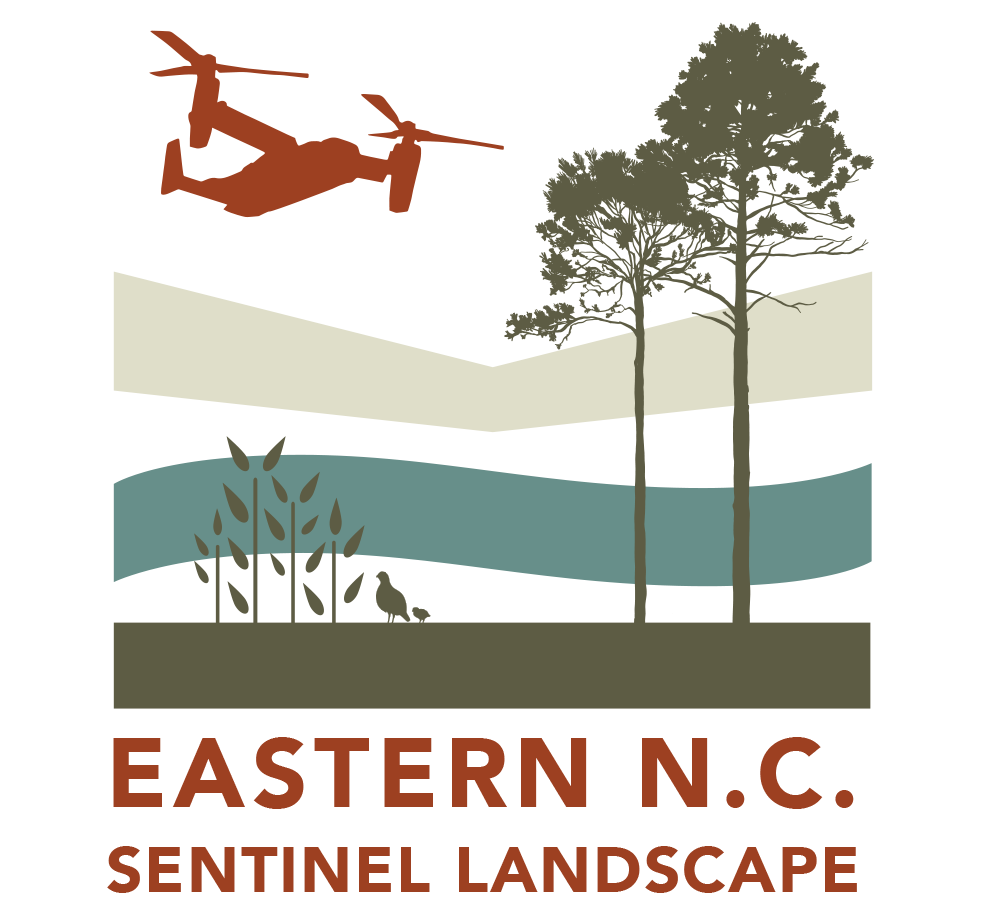HISTORIC OVERVIEW OF THE PARTNERSHIP
At one time, much of rural North Carolina was able to avoid the negative impacts of unplanned development and the encroachment of incompatible land uses on working lands, natural resource conservation, and military training. This is no longer true. As North Carolina grows, the rural landscape is no longer isolated from such threats and immune to such pressures. Unplanned development and the encroachment of incompatible land uses threaten the health of working lands and natural systems with the same force that they threaten the health of the military training network in eastern North Carolina—not only the bases but also the “away areas” and “corridors” that link military bases and airfields with remote training ranges (Marstel-Day, 2012a).

To proactively address this issue, the Eastern North Carolina Sentinel Landscapes Partnership was formed to create innovative strategies for the sustainable landscape needed to promote a healthy economy, environment, military, and community in eastern North Carolina and beyond. In effect, these partners are sentinels watching out for a valued landscape that supports three different and important sets of interests: working lands, conservation, and national defense.
BRIDGING ECONOMIC GAPS & CONSERVATION EFFORTS
In the early stages of the Partnership, a group of stakeholders realized that a crucial economic disconnect between certain local communities and the military existed. These stakeholders were also aware of the pronounced private landowner rights in North Carolina, suggesting any new initiatives should center on voluntary land stewardship for success. These preliminary endeavors date back to 1998, aiming to safeguard one million acres within a decade. Several subsequent efforts emerged, such as forestry summits, the One North Carolina Natural Program, the Military Growth Task Force, regional military installation growth plans, and North Carolina Working Lands. Challenges like the 2005 Base Closure and Realignment Commission highlighted the importance of collective action among stakeholders.
These stakeholders also explored the potential of constructing an ecosystem market framework in eastern North Carolina to boost both conservation and national defense maintenance and enhancement. This initiative’s initial focus revolved around habitat credits for endangered species, longleaf pine preservation, and maintaining open spaces relevant to military training routes.
To guide this planning, stakeholders established three committees: Science, Economics, and Policy. The Science Committee was charged with assessing conservation viability, crafting research-driven metrics for conservation value, and making recommendations grounded in sound science. The Economics Committee’s role was to decipher incentives needed for private landowners and how a market-centric method could yield benefits for conserved and defense-compatible lands. Meanwhile, the Policy Committee aimed to draft guidelines for landowner engagement and evaluate the effectiveness of policies for program implementation.
Recognizing that the challenges of eastern North Carolina surpassed individual species or ecosystems and even military routes, a broader vision emerged. This vision aimed to intertwine working lands, conservation, and national defense across an expansive landscape. From this shared understanding, the North Carolina Sentinel Landscapes Partnership was born.
